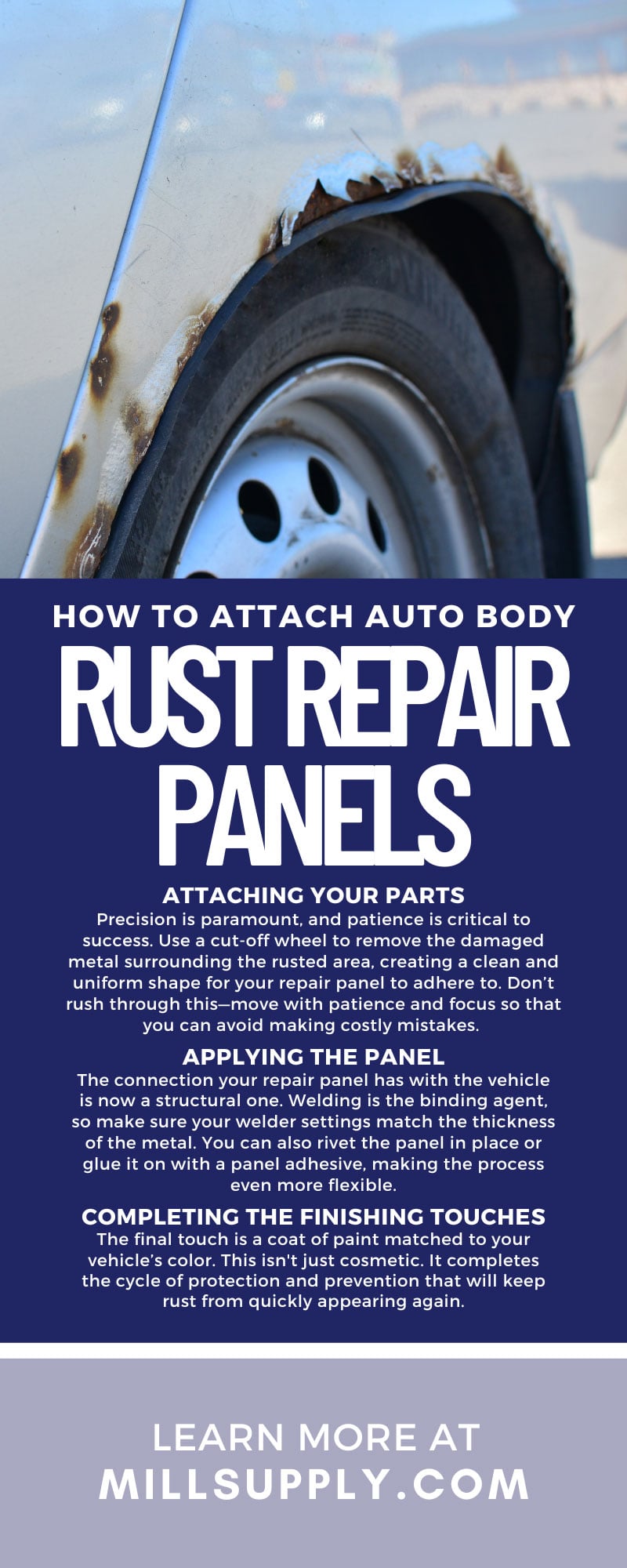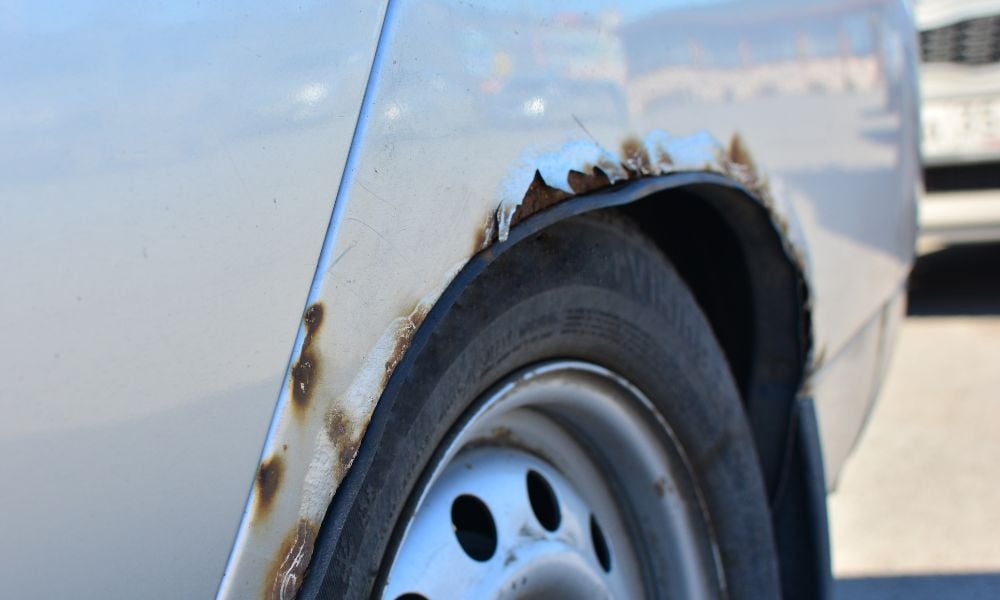When the unsightly specter of corrosion weaves its way into the steel of vehicles, dealing with the rust is a race against time. These repairs are critical to make before a nuisance turns into a safety issue. For those steering fleets or driving cars that wrestle with nature’s harshest elements, rust isn’t just a sign of wear and tear but a side effect of time and constant exposure.
In this comprehensive guide, we’re doing more than bringing in reinforcements for your fight against rust. We’re teaching you to fortify your vehicle against the elements that seek to wear it down. Take this lesson on how to attach auto body rust repair panels, then use them to keep your vehicle in great condition.
Understanding the Rust Invasion
Before you begin your repair, identify the type of rust you’re dealing with because it’ll help you learn the extent of the damage. The type you’re dealing with can be one of three: surface, scale, and penetrating.
Most of these names may seem straightforward, but you should understand what stages of rust they represent. Surface rust is the least invasive—it’s in nicks and scratches. Meanwhile, scale rust has more depth and may result in material loss.
Simply put, surface rust is an early indicator of a problem, while scale rust is the result of letting that problem fester. Letting scale rust corrode further will only lead to more problems.
Penetrating rust is the most severe type, often appearing in areas where parts meet and rust eats through the metal completely. It’s both a visual nuisance and a structural nightmare.
For fleet owners and automotive enthusiasts alike, ignoring rust’s progression can lead to significant costs down the road. The longer you let surface blemishes worsen, the higher the repair bills will be when addressing deeper issues.
Choosing Your Supplies
Before making any repairs to your car or truck, get all the supplies you need ready to go. This will include a range of safety gear, essential tools, and durable parts that’ll help you ensure success long after you apply the panel.
Speaking of which, the rust repair panels are the focus of this repair, so stock up as soon as possible. Beyond the body panels, assess your safety gear.
Wearing protective gear isn’t just a suggestion but a cardinal rule. Gloves, aprons, and respirators are your first line of defense against the potential hazards of rust and repair materials.
Plus, make sure your safety equipment suits the tools you’re using. For instance, the two most important tools to have with you are a welder and an angle grinder, as they’ll help you fine-tune the metal to meet your needs.
Welding can be dangerous without the right gear, so ensure you have protection against fumes and sparks using welding-specific helmets, gloves, goggles, boots, and other equipment.
Finishing Your Supplies Checklist
Having the right tools is the difference between a patch job and a professional repair. An angle grinder, a cut-off wheel, and a quality welder are critical tools for cutting and refining the car body. But there’s one very important detail you can’t neglect—a marker. As we’ll discuss later in this guide, a marker is invaluable for getting the auto body ready before making any cuts, ensuring only accurate, successful adjustments.
Don’t forget about the supplies you’ll need to make the finishing touches. These include a seam sealer, paint, and primer.
Attaching Your Parts
Now that you know more about getting ready for the project, let’s break down how you can attach auto body rust repair panels. It’s here you can start using your marker to indicate where your panel will go so that you can identify the area you need to remove. You can also compare your rust panel to it to ensure it looks like a good fit.
Precision is paramount, and patience is critical to success. Use a cut-off wheel to remove the damaged metal surrounding the rusted area, creating a clean and uniform shape for your repair panel to adhere to. Don’t rush through this—move with patience and focus so that you can avoid making costly mistakes.
Applying the Panel
Remember to ensure your repair panel aligns perfectly with the area it’s covering. Use clamps to hold it in place as you weld around the edges, creating a secure fit before the final weld.
The connection your repair panel has with the vehicle is now a structural one. Welding is the binding agent, so make sure your welder settings match the thickness of the metal. You can also rivet the panel in place or glue it on with a panel adhesive, making the process even more flexible.
Take your time to create strong and consistent welds that’ll withstand time and terrain. Avoiding common mistakes, such as overlooking seams and rushing the process. This saves time and frustration post-repair. If you see rust, there’s a reason. So inspect the whole workpiece, and plan your repair with precision.
After you install the rust panel, inspect the area for any scuffs or other damage to ensure the project is as smooth and seamless as possible. Don’t forget to grind down any spots that require a smoother finish so that you can get the surface ready for the finishing touches.
Completing the Finishing Touches
Your rust repair panel is in place, so it’s time to apply the finishing touches.
Use a seam sealer to seal the interior of your repair and protect it from further rust damage.
The newly repaired area is now bare metal and susceptible to more rust. So how do you prevent the issue from happening all over again?
Removing rust, only to accidentally create further rust damage, isn’t a satisfying result, and you can avoid that with the right materials. Apply a high-quality primer to keep corrosion at bay and provide a foundation for your paint.
The final touch is a coat of paint matched to your vehicle’s color. This isn’t just cosmetic. It completes the cycle of protection and prevention that will keep rust from quickly appearing again.
Wrapping Up Repairs
Now, you’re officially at the finish line. Check your work, ensure a thorough job, and don’t be afraid to ask for help if the rust returns. Professional advice can add mileage to the quality of your repair and safeguard your vehicle’s future. Seek out rust repair panels for your vehicle today so that you can begin your project with the parts and knowledge you need for satisfying results.



Leave a Reply